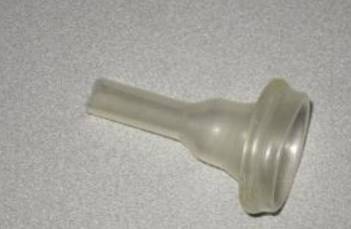Urinary catheterization: reasons for its use, types and complications
Surely you have heard about urine catheterization and its importance after some surgeries, but this catheter has great uses and importance while treating some diseases.. Learn about the types urine catheterization Methods of use, importance and complications in this article.
What is urine catheterization?
Urinary catheters It is a flexible tube made of rubber or silicone that is installed to empty the bladder of urine and collects it in a plastic bag that is emptied when it is full. It is installed by a doctor or a nursing staff.
Indications for the use of urine catheterization
The doctor may install it Urinary catheterization In the event that it is difficult for the patient to urinate normally, due to some medical conditions, including:
It is also possible that the doctor may request the installation of a urinary catheter in these cases:
Types of urine catheterization
There are several types of urine catheters that the doctor can use, depending on your health condition or depending on how long it must be installed. These types are:
Intermittent urinary catheters
It is the catheter used in most cases, as it is installed and removed several times throughout the day and is used to empty the bladder of urine, and you must learn how to install it in the urethra (external urethra) and remove it yourself, and you can also use any kind of lubricant to make it easier to insert into the urethra Without feeling pain or discomfort.
It is possible to leave the outer end of the catheter open so that the bladder is emptied directly into the base of the toilet, or it can be connected to a plastic bag in which the urine is emptied and replaced after it is full.
Indwelling urinary catheters
It is also installed in the same way as the intermittent catheter, but it is not removed, as it is attached to a balloon filled with water inside the bladder so that it does not come out on its own, and its outer end is also connected to a plastic bag to empty urine with. Fixed catheters are usually made with a valve at the end that can be closed or opened as needed to empty the bladder. You should know that this type must be changed and replaced every 3 months.
Suprapubic catheters
Called Urine catheterization from the abdomen This catheter is also of the fixed type that is not removed daily, but is not connected to the body through the urethra, but rather is installed through an opening in the abdomen above the pubic area, and epidural anesthesia (epidural), general anesthesia, or local anesthesia is usually used to install it.
This type is used if there is damage or obstruction of the urethra, or if there is difficulty in installing the intermittent catheter yourself. This catheter also comes with a valve that enables you to open and close the catheter when needed. It must be changed every 4-12 weeks.
Complications and side effects of urinary catheterization
When installing a urinary catheter, some effects may occur, such as:
- In rare cases damage or damage to the urethra or perforation of the bladder wall may occur.
- It is possible for the catheter to be inserted into the vagina instead of being inserted into the bladder by mistake, and this problem often occurs in infant girls.
- When a permanent catheter is inserted, it may happen that the balloon bulges in the urethra instead of the bladder, injuring the wall of the urethra. This problem is more common in males because their urethra is longer than that of females.
- With the catheter in the bladder, it is possible to cause infection with bacteria that cause urinary tract infections Urinary tract infectionSymptoms include a feeling of fever and a change in the smell and color of urine.
Causes of urine leakage from urinary catheters
This can happen for several reasons, such as:
- The catheter is very small.
- Constipation.
- Catheter obstruction, causing leakage of urine outside.
- Bladder spasms.
- The balloon size is not appropriate in permanent catheters.
- Urinary tract infection.
When do you go to the doctor immediately?
If you develop any of these symptoms, you should contact your doctor immediately, as they may indicate an infection or other serious complications:
- Feeling of fever with or without chills.
- Pain in the abdomen, one side, or lower back.
- The appearance of a strong and unpleasant smell of urine.
- Change in the color or texture of the urine, or the appearance of impurities or blood in the urine.
- Leakage of urine outside the catheter, or a small amount of urine, or no urine at all.
Prevention of urinary catheterization complications and tips for coping with them
In order to avoid any complications or damage, and to avoid infection in the urinary tract, you must do the following:
Living with a urinary catheter
Having the catheter should not stop you from your daily activities. Your doctor will tell you when and how you will be able to go to work or exercise.
As for marital sex, the doctor will also tell you when you can. Usually, you can practice marital sex with the installation of intermittent catheters or suprapubic catheters.
An alternative to a urinary catheter

There are those who are looking for alternatives to urinary catheters because of concern about its complications external catheter or (Condom catheter) Male external catheters (Condom catheterThis catheter is not placed inside the bladder, but is placed around the penis (such as a condom).
Finally, we must tell you that installing a urine catheter is a very common procedure and is not considered a complicated procedure if it is done by a specialized doctor who can give you clear instructions regarding dealing with the catheter and living with it. Also, never forget to go to the doctor if you feel any of the symptoms that we mentioned earlier, and if If you have any questions, you can consult one of our doctors here.

